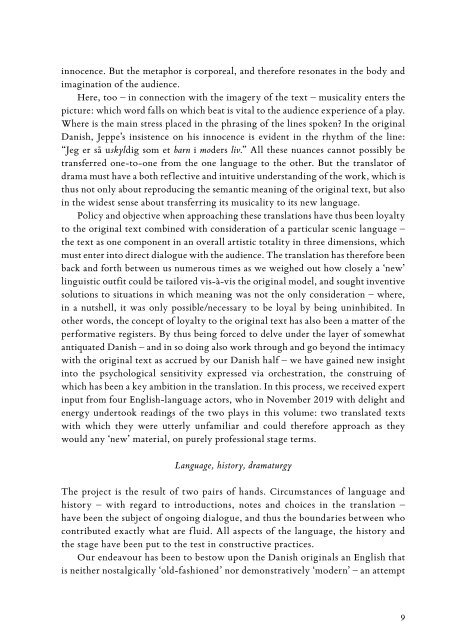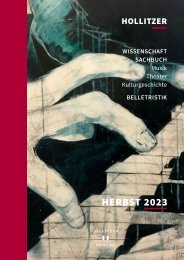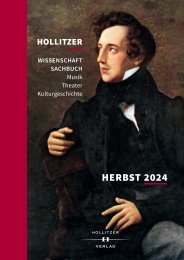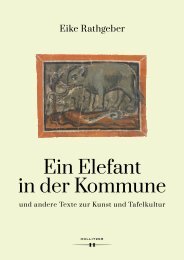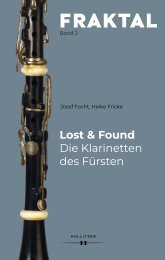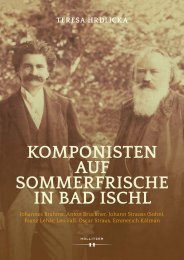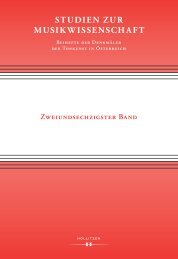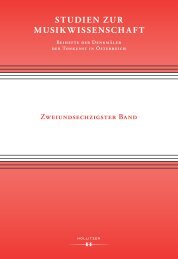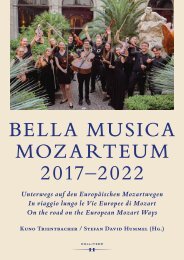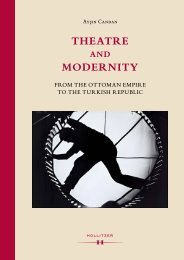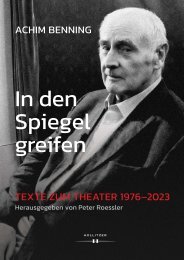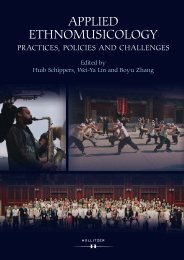Leseprobe_Holm_Holberg Plays Volume I
You also want an ePaper? Increase the reach of your titles
YUMPU automatically turns print PDFs into web optimized ePapers that Google loves.
innocence. But the metaphor is corporeal, and therefore resonates in the body and<br />
imagination of the audience.<br />
Here, too – in connection with the imagery of the text – musicality enters the<br />
picture: which word falls on which beat is vital to the audience experience of a play.<br />
Where is the main stress placed in the phrasing of the lines spoken? In the original<br />
Danish, Jeppe’s insistence on his innocence is evident in the rhythm of the line:<br />
“Jeg er så uskyldig som et barn i moders liv.” All these nuances cannot possibly be<br />
transferred one-to-one from the one language to the other. But the translator of<br />
drama must have a both reflective and intuitive understanding of the work, which is<br />
thus not only about reproducing the semantic meaning of the original text, but also<br />
in the widest sense about transferring its musicality to its new language.<br />
Policy and objective when approaching these translations have thus been loyalty<br />
to the original text combined with consideration of a particular scenic language –<br />
the text as one component in an overall artistic totality in three dimensions, which<br />
must enter into direct dialogue with the audience. The translation has therefore been<br />
back and forth between us numerous times as we weighed out how closely a ‘new’<br />
linguistic outfit could be tailored vis-à-vis the original model, and sought inventive<br />
solutions to situations in which meaning was not the only consideration – where,<br />
in a nutshell, it was only possible/necessary to be loyal by being uninhibited. In<br />
other words, the concept of loyalty to the original text has also been a matter of the<br />
performative registers. By thus being forced to delve under the layer of somewhat<br />
antiquated Danish – and in so doing also work through and go beyond the intimacy<br />
with the original text as accrued by our Danish half – we have gained new insight<br />
into the psychological sensitivity expressed via orchestration, the construing of<br />
which has been a key ambition in the translation. In this process, we received expert<br />
input from four English-language actors, who in November 2019 with delight and<br />
energy undertook readings of the two plays in this volume: two translated texts<br />
with which they were utterly unfamiliar and could therefore approach as they<br />
would any ‘new’ material, on purely professional stage terms.<br />
Language, history, dramaturgy<br />
The project is the result of two pairs of hands. Circumstances of language and<br />
history – with regard to introductions, notes and choices in the translation –<br />
have been the subject of ongoing dialogue, and thus the boundaries between who<br />
contributed exactly what are fluid. All aspects of the language, the history and<br />
the stage have been put to the test in constructive practices.<br />
Our endeavour has been to bestow upon the Danish originals an English that<br />
is neither nostalgically ‘old-fashioned’ nor demonstratively ‘modern’ – an attempt<br />
9


